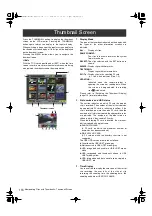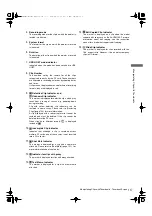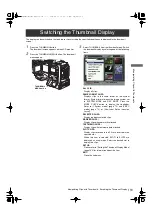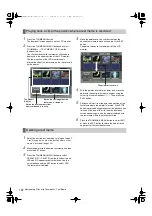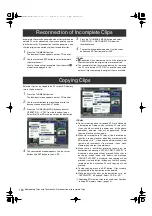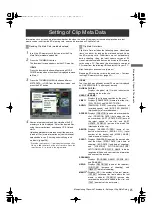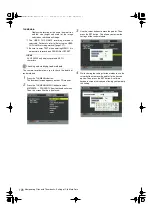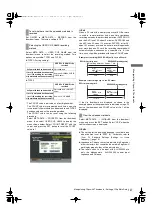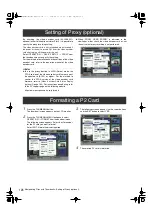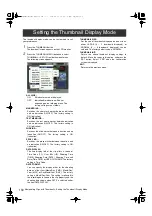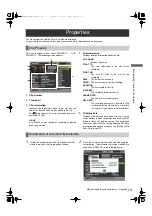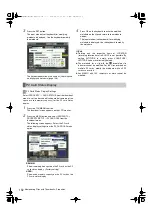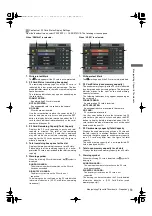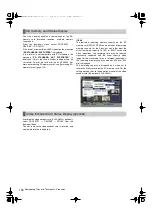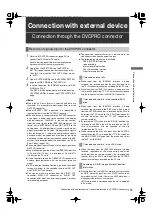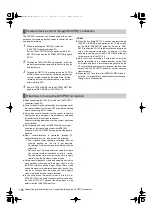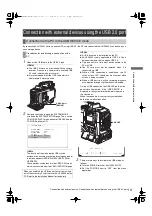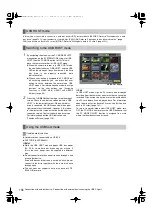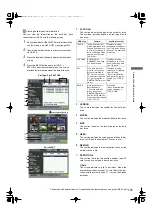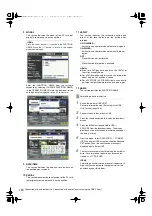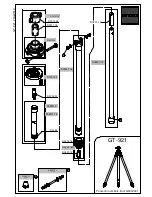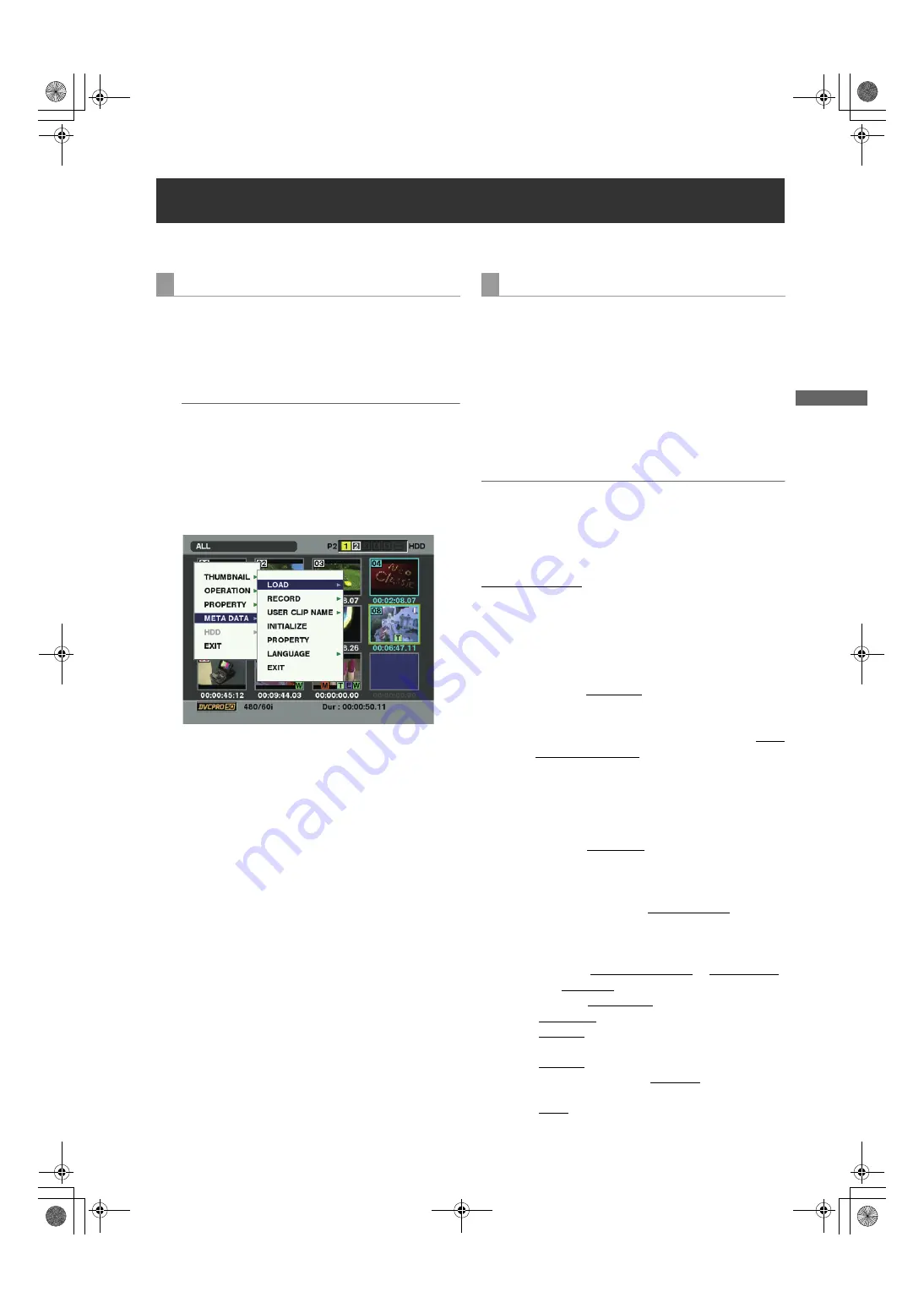
125
Manipulating Clips with Thumbnails : Setting of Clip Meta Data
M
a
nipu
lat
ing Cl
ips
wit
h T
h
u
m
bnai
ls
Information such as the name of person who shot the video, the name of the reporter, the shooting location, or a text
memo can be read from the SD memory card, and can be recorded as Clip Meta Data.
1
Insert the SD memory card that contains the Clip
Meta Data (metadata upload file).
2
Press the THUMBNAIL button.
The thumbnail screen appears on the LCD monitor.
Note
Press the thumbnail button while pressing MODE
CHECK button when a thumbnail is displayed to move
to Step
4
.
3
Press the THUMBNAIL MENU button and Select
META DATA
>
LOAD from the thumbnail menu, and
press the SET button.
4
Names of metadata upload files stored on the SD
memory card are displayed.* Select the desired files
using the cursor buttons, and choose YES. Upload
starts.
Uploaded metadata is retained even if the power is
turned off. For [more information on] confirmation of
uploaded data, see [Checking and modifying read
metadata
] (page 126).
* Press the cursor button (
"
) to display the full name of the
file, up to 100 characters, at the cursor position. Press the
cursor button (
!
) to return to the original state.
Clip Meta Data includes the following items: Underlined
items can be set by reading the metadata upload file on
the SD memory card. Other items are set automatically
during shooting. Using the latest update version of P2
viewer, metadata upload files can be written to SD memory
cards using a PC. Download the latest update version of
P2 viewer from the following URL and install it to your PC:
https://eww.pavc.panasonic.co.jp/pro-av/
Regarding SD memory cards to be used, see <Cautions
in using SD memory cards> (page 22).
Note
The file which was edited by except P2 viewer is displayed
as “UNKNOWN DATA”, and may not be read.
GLOBAL CLIP ID:
Displays the global clip ID, which indicates the
shooting status of the clip.
USER CLIP NAME:
Displays the clip name specified by the user.*
1
VIDEO:
Displays [FRAME RATE] (frame rate of the clip),
[PULL DOWN], and [ASPECT RATIO].
AUDIO:
[SAMPLING RATE] (sampling frequency of
recorded sound) and [BITS PER SAMPLE]
(digitized bit[s] of recorded sound).
ACCESS
:
Displays [CREATOR] (person who recorded the
clip), [CREATION DATE] (date when the clip
was recorded), [LAST UPDATE DATE] (date of
the latest update of the clip), and [LAST
UPDATE PERSON] (person who made the
latest update of the clip).
DEVICE:
Displays [MANUFACTURER] (name of the
device manufacturer), [SERIAL NO.] (serial
number of the device) and [MODEL NAME]
(model name of the device).
SHOOT:
Displays [SHOOTER] (name of the person who
shot the video), [START DATE] (start date of
shooting), [END DATE] (end date of shooting),
and [LOCATION] ALTITUDE/LONGITUDE/
LATITUDE/SOURCE/PLACE NAME (altitude,
longitude, latitude, and source of the information
and name of the location).
SCENARIO:
Displays [PROGRAM NAME], [SCENE NO.],
and [TAKE NO.].
NEWS:
Displays [REPORTER] (name of the reporter),
[PURPOSE] (purpose of shooting), and
[OBJECT] (object of shooting).
MEMO*
2
:
Displays [NO.] (the number of the text memo),
[OFFSET] (location of the frame where the text
memo is added), [PERSON] (person who
recorded the text memo added to the clip), and
[TEXT] (contents of the text memo).
Setting of Clip Meta Data
Reading Clip Meta Data (metadata upload)
Clip Meta Data items
AJ-HPX3000G(VQT1K82-5)E.book 125 ページ 2009年11月12日 木曜日 午後8時19分






